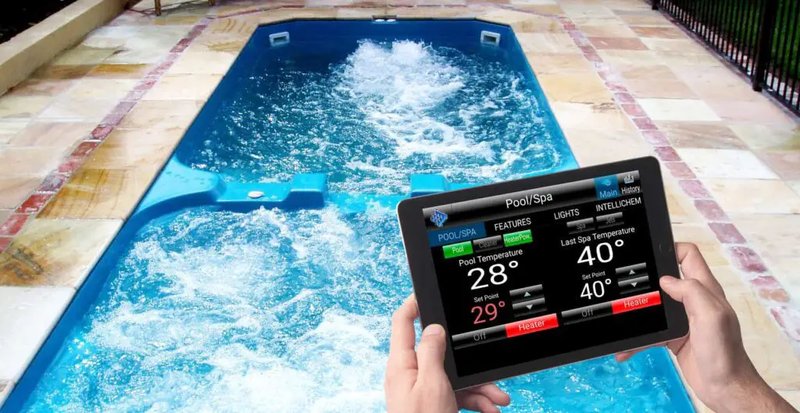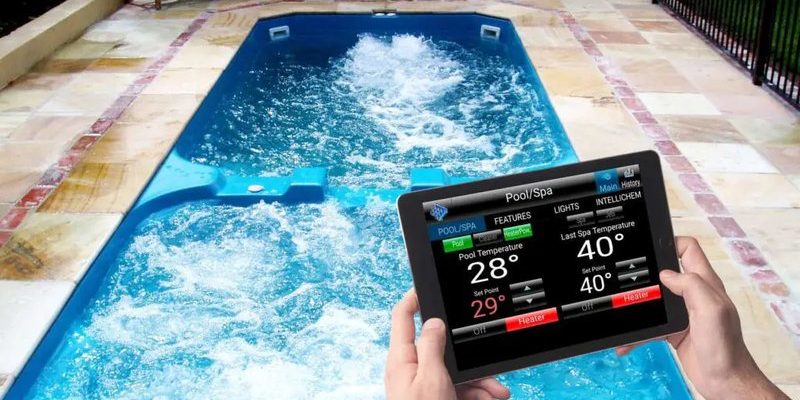
Here’s the thing: pool tech is getting smarter. The idea of managing every gadget—doors, lights, thermostats, and yes, even your pool—from one app or by voice command is pretty tempting. But swimming pool systems, especially those made by brands like Polaris, sometimes play by different rules. Let’s look at how these remotes actually work, what makes them “smart” (or not), and whether you can actually sync, code, or pair them up with the rest of your smart home devices.
How Do Polaris Pool Remotes Actually Work?
First things first, let’s talk about what a Polaris pool remote really is. If you’ve ever used one, you’ll know it looks and feels a bit like a chunky TV remote, but with buttons for things like water features, pool lights, or cleaning cycles. These remotes typically communicate with a pool control panel using a radio signal—similar to how your car key fob unlocks your vehicle from a few feet away. No need for Wi-Fi, no Bluetooth pairing, just a dedicated frequency and some simple coding.
The reason this matters is because the technology inside most Polaris remotes is a bit old school. They don’t connect directly to the internet, and you definitely won’t find an option in your Alexa app to pair a pool remote out of the box. Most of these remotes, like the Polaris EA series or the older Zodiac ones, are designed for one thing: reliable, wireless pool control. That’s perfect for folks who want to avoid complicated setups, but not so great if you crave smart home integration.
You might be wondering, “Why don’t they just make these remotes Wi-Fi enabled?” Honestly, it comes down to durability and reliability. Pool areas are tough environments—water, humidity, and harsh sunlight are no joke—so simple radio-based controls keep things fuss-free.
On top of that, Polaris remotes often rely on batteries (sometimes the classic coin batteries) and have to be coded or synced with the pool’s specific receiver. If you ever need to reset, pair, or troubleshoot your remote, it’s usually hands-on and, to be blunt, not very ‘smart home’ at all.
What Makes a Device “Smart Home Compatible”?
Before we get too deep, let’s break down what “smart home compatible” actually means. When we talk about smart home devices, we’re usually talking about gadgets that can connect to your home network—Wi-Fi, Zigbee, Z-Wave, or Bluetooth—and can be controlled using apps, voice assistants (like Alexa or Google Assistant), and sometimes automation routines. Think smart lights, thermostats, and even robot vacuums. They work together because they use common languages (or protocols) and can be synced or grouped from a central app.
Polaris pool remotes, by design, just aren’t built for this kind of integration. The remote and its receiver are a closed loop—sort of like walkie-talkies that only talk to each other. There’s no way to “add” your pool to your smart home hub directly, at least not using the out-of-the-box hardware. Without the ability to connect to Wi-Fi or Bluetooth, the remote just can’t be seen by Alexa or Google Home.
That said, some newer pool automation systems—like Jandy’s iAquaLink or Pentair’s IntelliTouch—*do* offer smart home integration. These are usually complete pool controllers, not just handheld remotes. They connect to your Wi-Fi and let you use an app (and sometimes even voice control) to manage everything. But if you just have a standard Polaris remote, you’re out of luck in the direct-connect department.
Can You Connect a Polaris Pool Remote To Smart Home Devices?
Short answer: not directly. The typical Polaris pool remote works on a proprietary radio frequency, which means it only talks to your pool’s control unit—not to Wi-Fi routers, smart speakers, or automation hubs. But there’s a bit more to the story if you’re willing to get creative (or technical).
Some pool owners have experimented with home automation by adding a “bridge” device. For instance, you could install a smart relay or smart plug on the power line feeding your pool equipment. Then, using your smart home app, you could turn the pool gear on or off remotely—but only in a basic way. This doesn’t give you the fine-tuned, button-by-button controls of your Polaris remote. It’s more like flipping the main switch than adjusting individual features.
- Universal smart home bridges: These can sometimes “learn” RF codes and repeat them, but most aren’t compatible with pool equipment frequencies.
- Wired control panels: Some high-end systems can be integrated with smart home hubs, but these usually require pro installation and extra hardware.
- Workarounds: Tech-savvy users occasionally set up “hacks” with gadgets like Raspberry Pi computers or smart home relays, but this isn’t for the faint of heart.
If you’re thinking, “Isn’t there an easier way?”—well, at this point, smart home integration for Polaris pool remotes is mostly wishful thinking unless you upgrade to a full smart pool system.
Why Would You Want Polaris Pool Remote and Smart Home Integration?
Let’s be real: having everything work together just feels good. When your pool controls are part of your smart home, you can:
- Set pool lights to match your backyard mood lighting with one voice command
- Create schedules for cleaning or heating based on weather forecasts
- Monitor pool equipment from anywhere, even when you’re traveling
- Get alerts if something needs troubleshooting, like a low battery or a stuck cleaner
If you’re the type who loves automation, the ability to code or customize routines is a game-changer. Imagine having your pool heater turn on automatically on chilly mornings, or syncing your water features with music during parties. Unfortunately, with a basic Polaris pool remote, you’re limited to manual button presses—no routines, no app notifications, no syncing with the rest of your smart home gadgets.
So, while the remote itself is handy, it just can’t keep up with the “set-it-and-forget-it” convenience that so many of us want from smart tech.
Common Problems With Polaris Pool Remotes and Smart Home Expectations
Here’s where things get frustrating. You buy a nice pool, get a fancy-looking Polaris remote, and assume it’ll play nicely with your smart home network. Reality check: most people run into at least one of these issues:
- Pairing problems: The remote must be paired (or coded) with the specific pool receiver. It won’t just sync with any random control box or smart hub.
- Battery woes: If the battery gets low or the remote resets, you lose sync—and have to start the pairing process again. Not exactly “set and forget.”
- No voice control: Even if you have Alexa or Google Home, there’s no way to add the remote as a device or automate pool tasks through your smart routines.
- Troubleshooting headaches: When something doesn’t work, you’re left checking codes, pressing tiny buttons, and reading the pool manual, not just rebooting an app.
Here’s a tip: if your goal is seamless smart home control, start with a system designed for it. Don’t expect a standard Polaris remote to magically “go smart”—it’s a bit like trying to teach an old dog new tricks.
Alternatives and Upgrades for Smart Pool Control
If you’re sold on the idea of a smart pool, here’s some good news: you have options! They don’t involve hacking your Polaris remote or crossing your fingers every time you try to pair devices. You might look at:
- Smart pool controllers: Systems like iAquaLink, Pentair ScreenLogic, or Hayward OmniLogic. These connect to Wi-Fi and can usually be integrated with Alexa, Google Home, or even Apple HomeKit.
- Third-party smart switches: For simple equipment (like pumps), a heavy-duty smart switch or relay can let you control power through your smart home app. But remember, this won’t give you fine control over features—just on or off.
- Upgrading the control panel: Some pool pros can retrofit your existing setup with a smart control board, letting you ditch the old remote entirely.
Honestly, if your pool is the centerpiece of your backyard, upgrading to a smart pool system might be worth it. It’s an investment—especially if you’re tired of hunting for your remote or fiddling with codes and resets.
Comparing Polaris Pool Remotes With Universal Remotes and Smart Devices
You might have heard of universal remotes that claim to control “all your home gadgets.” Do they work with pool stuff? Usually not. Here’s why:
- Universal remotes are designed for TVs, stereos, or streaming devices, using common IR (infrared) or Bluetooth signals. Polaris pool remotes use specific radio frequencies not covered by most universal devices.
- Even so-called “smart” remotes, like Logitech’s Harmony series, don’t support pool gear—there’s no code in their library for pool controls, and they can’t pair with the proprietary tech used by Polaris.
- If you want to control your pool through an app or smart speaker, you need a pool system built for smart integration from the ground up.
So, while your universal remote can handle your home theater, it’ll pretty much ignore your pool entirely. The only real crossover happens when the pool equipment itself supports smart home standards—something most Polaris remotes just aren’t built for.
What Does the Future Hold for Polaris Pool Remotes and Smart Homes?
Tech moves fast, and there’s hope that pool brands like Polaris will eventually jump on the smart home bandwagon. Already, we’re seeing more pool control systems that come with built-in Wi-Fi, apps, and voice support. If enough homeowners demand this level of convenience, it’s likely only a matter of time before “smart pool remotes” become the norm.
For now, though, you’re looking at a bit of a divide: traditional remotes that work reliably within their own system, and newer smart pool controllers designed for home automation. If you’re planning a new pool, talk to your installer about future-proofing your setup. And if you’re sticking with your current Polaris remote, know that while it’s great at what it does, it’s not likely to sync or pair with your other smart gadgets just yet.
Final Thoughts: Finding the Right Solution for Your Pool and Smart Home
There’s no denying that combining pool control with your smart home is a tempting idea. Who wouldn’t want to manage their backyard oasis from the same app as their thermostat or security system? But as it stands, most standard Polaris pool remotes aren’t ready for prime time in the smart home world. They do their job well—turning on jets, lights, or cleaners with the press of a button—but smart home compatibility just isn’t in their DNA.
If seamless integration is important to you, consider looking into a true smart pool controller, or talk to a pool professional about modernizing your setup. In the meantime, grab your Polaris remote, check the battery, keep it paired—and enjoy your pool for what it is: a place to relax, unwind, and sometimes unplug from the tech race entirely.
